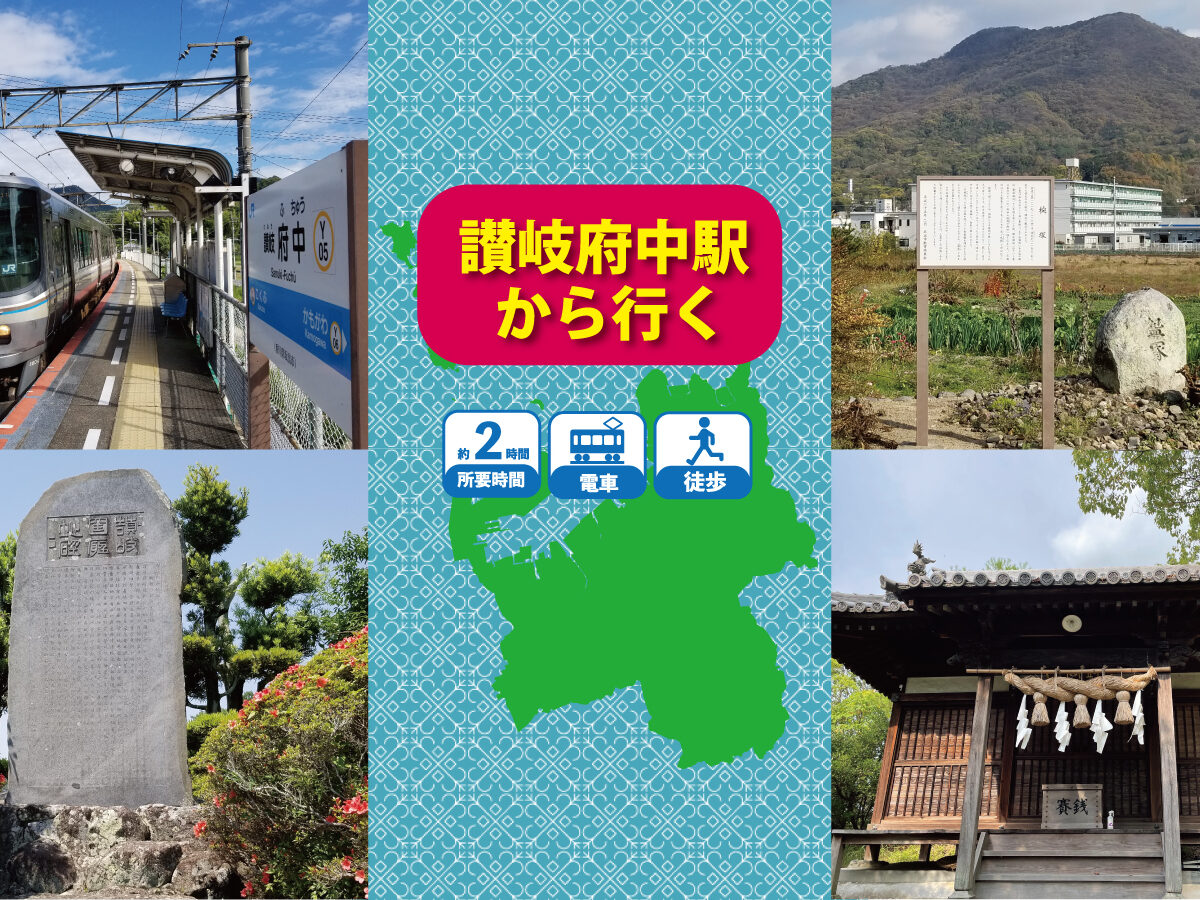Departing from Sanuki-Fuchu Station (Station-Nearby Model Course)

-
About 11 minutes
01 Sanuki-Fuchu Station
-
Have a great trip!
About 11 minutes
-
-
About 7 minutes
02 Kagawa Prefectural Center for Buried Cultural Properties
-
This facility conducts research and studies on “buried cultural properties” and works to preserve and utilize them. It features Exhibition Room 1, which provides an overview of Kagawa’s history through archaeological sites and artifacts, and Exhibition Room 2, which introduces the latest research findings. The center also conducts outreach activities such as traveling exhibitions at various cultural facilities and school visits.
About 7 minutes
-
-
About 4 minutes
03 Ruins of Kaihoji Temple Pagoda
-
Based on the excavated roof tiles and pagoda style, this is believed to be the ruins of a temple from the Hakuho period and is considered one of the oldest temples in the prefecture. In 1970, an investigation was conducted at this site, which was traditionally believed to be the location of a bell tower. The original foundation stones and pagoda base were discovered, leading to its designation as a prefectural cultural property for being the best-preserved pagoda site in the prefecture.
About 4 minutes
-
-
About 4 minutes
04 Monument to the Ruins of Sanuki Kokufu
-
This is the site of the Sanuki provincial capital, which covered an area of five cho square and was established for each province after the Taika Reforms. It functioned as the political and cultural center of ancient Sanuki. Famous provincial governors such as Ki no Natsui, Fujiwara no Yasunori, and Sugawara no Michizane were appointed here and left many accomplishments. Place names related to the provincial office, such as Kakinouchi, Chotsuki, Jotsuki, Shoso, and Seido, still remain in this area, breathing life into about 1,400 years of history.
About 4 minutes
-
-
About 3 minutes
05 Tsuzumigaoka Shrine
-
-
Dairi Spring
-
Gikodo Hall
The Gikodo Hall standing next to Tsuzumigaoka Shrine was built in 1913, modeled after the Kinomaru Palace, which was Emperor Sutoku’s residence.
About 3 minutes
-
-
About 1 minutes
06 Kikuzuka (Chrysanthemum Mound)
-
Emperor Sutoku named the prince born between him and Lady Aya as Akisue, gave him the chrysanthemum crest, and bestowed him to Lady Aya’s father, Aya Takato, to be the heir of the Aya family. The tomb of this prince is located north of Tsuzumioka Shrine and is called Kikuzuka. It is a mound of stones piled on a square platform, currently located in the yard of a private residence.
About 1 minutes
-
-
About 8 minutes
07 Wanzuka (Bowl Mound)
-
North of Tsuzumigaoka Shrine, in a field northeast of Kikuzuka, there remains a natural stone inscribed with “Wanzuka.” It is said to be the place where Emperor Sutoku’s dinnerware was buried.
About 8 minutes
-
-
About 18 minutes
08 Kiyama Shrine
-
Kiyama Shrine is a prestigious shrine known as a Shikinaisha (an officially recognized shrine in ancient times). It enshrines Kangushi-o, who is said to have governed the Sanuki Province. Kangushi-o is a legendary figure, said to be the son of the 12th Emperor Keiko. He defeated an evil fish that was ravaging the area at the time, and because he remained in Sanuki Province, he came to be called Sarurei-o. Within the shrine grounds, there is also a Amagoi Tenmangu shrine dedicated to Sugawara no Michizane.
About 18 minutes
-
-
09 Sanuki-Fuchu Station (Final Stop)
![Departing from Sanuki-Fuchu Station (Station-Nearby Model Course) - [Official] Sakaide City, Kagawa Tourism & Travel Guide | Odekake Kakehashi Sakaide](https://sakaide-kankou.com/en/wp-content/themes/sakaide-kankou-theme/src/img/svg/hero-banner-black.svg)






















